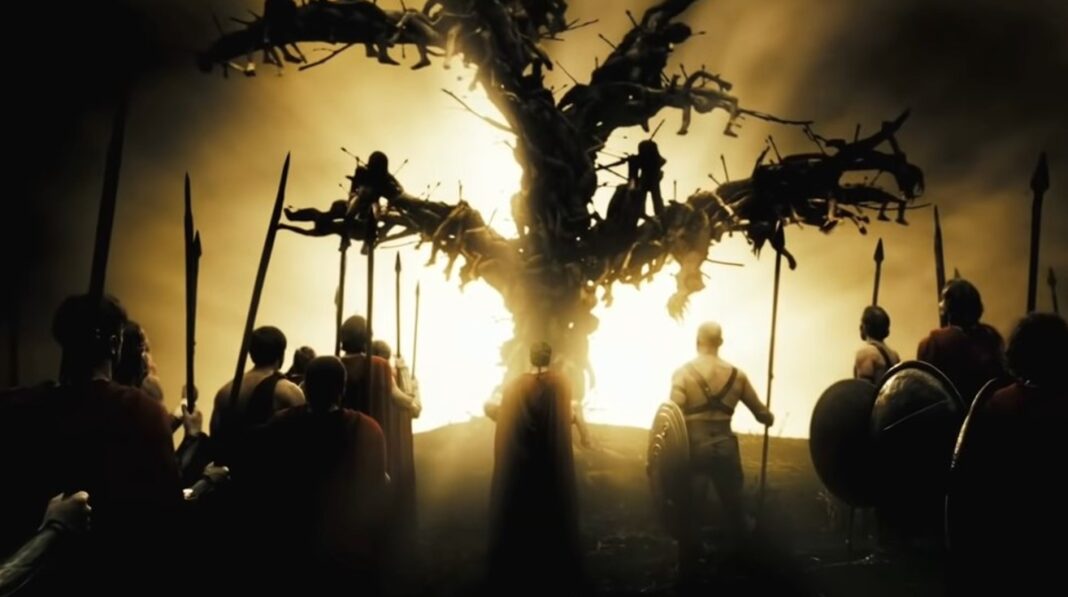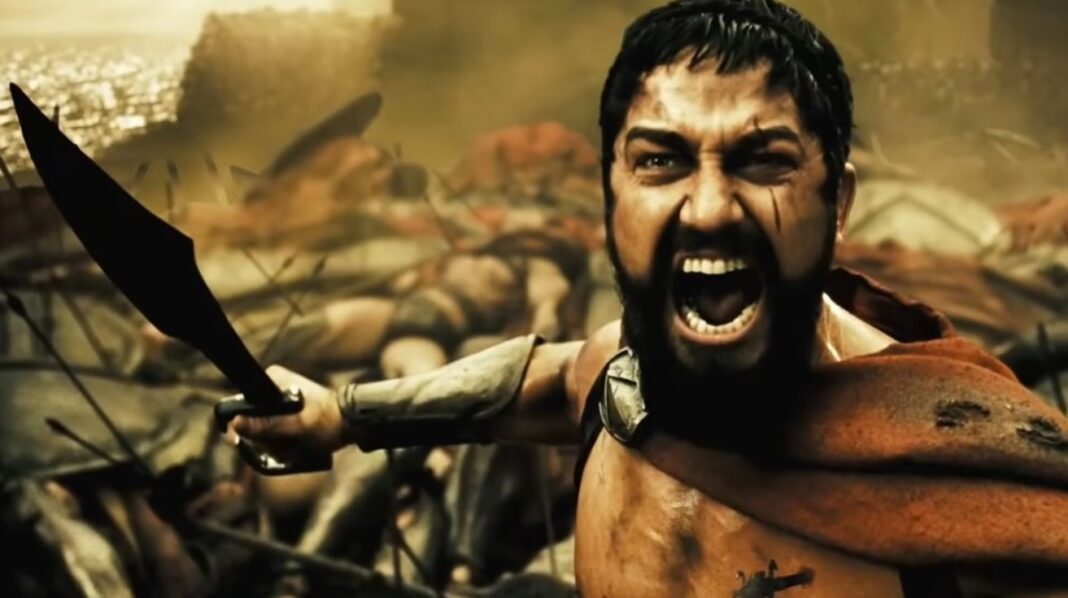Comic book to movie adaptations have risen to be the indisputable kings of the box office for the better part of the last 15 years, grossing more in ticket sales and garnering deeper hype than virtually every other genre combined. It’s essentially been a slugfest between comic giants Marvel and DC, leaving little to no room in the market for variants from smaller, lesser-known publishers.
While we have all witnessed major story arcs for The Avengers, Spider-Man, and Batman play out on the big screen over the years, there was another epic tale of heroism that came before many of the aforementioned storylines hit theaters. Even more impressive is that this tale is (mostly) an accurate telling of a piece of history.
Released on March 9th, 2007, 300 captured audiences’ attention with its stylized, grainy aesthetic that was literally pulled from the pages of the 1998 Frank Miller comic series it’s based on. It’s a rare shot-for-shot remake of the book, with director Scott Snyder photocopying pages from Miller’s comics and using them as storyboard pieces to plot the film. Utilizing CGI to tell this story is essential, and 90% of it was shot against green screens. Though this is widely considered to fall more in the category of historical fantasy fiction, the actual events behind 300 are very real and very mind-boggling.

In 480 BC, during the Battle of Thermopylae, King Xerxes of Persia (Rodrigo Santoro) led his massive army of 10,000 to invade and conquer Greece, with hopes to expand their ever-growing empire. In order to get to Greece, however, the colossal army would have to travel through the narrow, bottleneck mountain passage of Thermopylae. King Leonidas of Greece (Gerard Butler), having learned of this impending invasion, decided to use this natural blockade to his advantage, choosing to deny surrender and instead stand his ground.
The Grecian army, by comparison, was paltry in size, comprised of a mere 300 men. Though they had allied with fellow Thespian and Theban armies, those only provided another 1000 troops to aid in the fight. The Persians scoffed at this ragtag group’s ambitious efforts, and Xerxes decided to wait them out, confident that they would eventually turn tail and give up their stance.
But oh, how he underestimated them. Not only did Leonidas and his men refuse to surrender, but they also held their own, outsmarting their opponents with wits and a fierce battle strategy. The fight is long, bloody, and violent, which only enhances the stylistic, avant-garde tone the filmmakers were looking for in order to keep that comic book feel. The movie was hyped as a comic book come to life, and moviegoers couldn’t have agreed more.
RELATED: Review: ‘the Batman’ Is the Gothic Detective Film We’ve All Been Waiting For
300 set springtime opening day records both domestically and overseas and went on to gross $456 million worldwide. Fans of the comic praised its loyalty to the original material, thanks partly to Miller’s involvement as a consultant during the film’s production. While it received high praise by moviegoers, many critics were harsher, citing that the film was all flair and no substance.
However, the bulk of the backlash for 300 came from historians who criticized the movie for being inaccurate. Scholars and chroniclers came forward to state that the Greek army was actually much larger in numbers yet still did not have as much success in the battle against the Persians as the movie and comic suggest. Nevertheless, the consensus remains that it is nearly impossible to determine exactly how the events played out when so few historical records remain from such a time.

Regardless, 300 has cemented itself in pop culture history. You can’t go far on social media without seeing several memes referencing it and the now-infamous “This.Is.Sparta!” war cry from Gerard Butler. The phrase ( along with several other rallying cries from the movie) was adopted by Michigan State’s football and basketball teams, taking advantage of the Spartan references and using it for game time chants.
Everyone loves a good underdog story. No matter your stance on the accuracy of the story depicted, there’s something very triumphant to be said for the bravery and sheer guts of Leonidas and his little army against such adversity. As humans, we all in some way hope we could display the same courage if we were faced with similar obstacles.
This leads to the question of whether it is something ingrained deep within us to protect what is ours, no matter the cost. We’ve all heard news stories about regular people gaining near-superhuman strength to lift a car off of someone or displaying incredible amounts of “fight” in a fight or flight scenario to fend off an attacker.
For the 300 men fighting for Greece, they were not only battling for their own lives but the lives of their loved ones and the very fabric of their everyday existence. What are we if we don’t have our home? The place we feel safe, raise our families and use as an escape from everyday troubles. For those 300, Sparta was not only that. It was a symbol of their freedom.
At the end of the day, don’t we all deserve that?




















